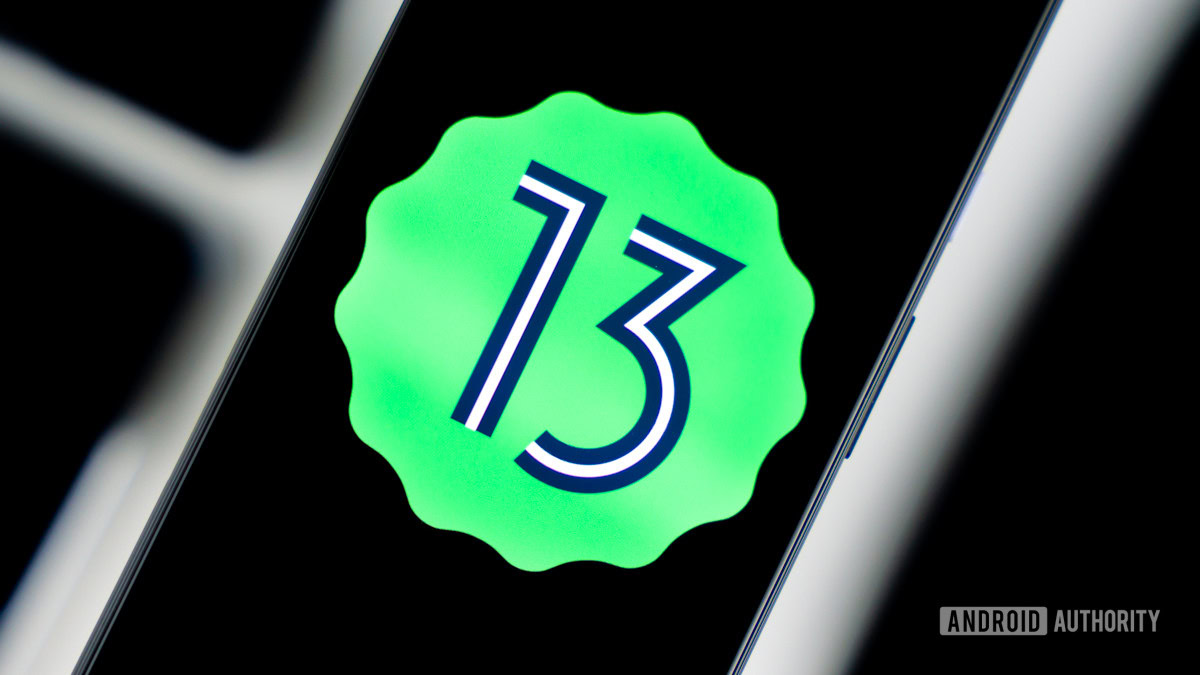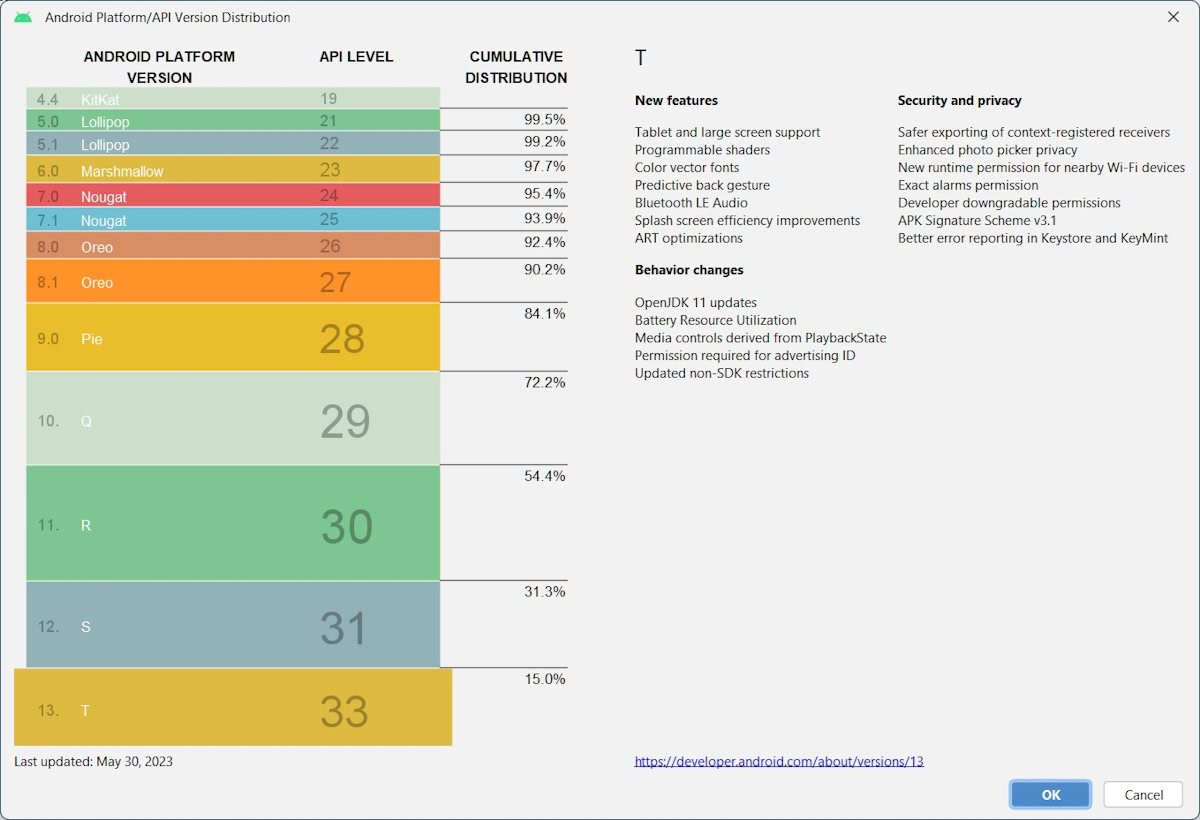Affiliate links on Android Authority may earn us a commission. Learn more.
The most popular Android version isn't even Android 12
Published onJune 6, 2023

- Android 13 can now be found on 15% of GMS-enabled Android devices worldwide.
- However, the most popular version of Android remains Android 11, present on 23.1% of Android devices worldwide.
- Even the decade-old Android 4.4 KitKat remains present on a whopping 15 million devices.
Google used to be pretty transparent about the percentage of devices running on a particular version of Android. These days, that data is not readily available anymore. Instead, Google now randomly updates the Android version distribution statistics on Android Studio. Turns out, Android 11 continues to be the most widely available release of Android as of May 30, 2023.
As shown within Android Studio (via Mishaal Rahman), when you create a new project, these Android version distribution statistics are a percentage of the total GMS-enabled Android devices running right now in the world. The latest public release of Android, Android 13, is now found on 15% of GMS-enabled Android devices worldwide. This increase in Android 13 devices comes at the cost of significant declines in Android 12, Android 11, Android 10, and Android 9.

However, the most popular version of Android right now is Android 11, found on over 23.1% of devices and declining very slowly.
Versions older than Android 9 continue to shed minor percentage points but never truly die. For instance, Android 4.4 Kitkat was released a decade ago but continues to be present on 0.5% of GMS-enabled Android devices worldwide. Presuming there are roughly 3 billion Android devices worldwide, that gives us a whopping 15 million devices that still run on Android 4.4 KitKat.
| Android versions | January 2023 | April 2023 | May 2023 |
|---|---|---|---|
| Android versions Android 13 | January 2023 5% | April 2023 12.1% | May 2023 15% |
| Android versions Android 12 | January 2023 18.9% | April 2023 16.5% | May 2023 16.3% |
| Android versions Android 11 | January 2023 24.4% | April 2023 23.5% | May 2023 23.1% |
| Android versions Android 10 | January 2023 19.5% | April 2023 18.5% | May 2023 17.8% |
| Android versions Android 9 | January 2023 13.2% | April 2023 12.3% | May 2023 11.9% |
| Android versions Android 8 | January 2023 9.5% | April 2023 6.7% | May 2023 8.3% |
| Android versions Android 7 | January 2023 3.7% | April 2023 3.3% | May 2023 3% |
| Android versions Android 6 | January 2023 2.8% | April 2023 2.5% | May 2023 2.3% |
| Android versions Android 5 | January 2023 2.1% | April 2023 1.9% | May 2023 1.8% |
| Android versions Android 4.4 | January 2023 0.7% | April 2023 0.6% | May 2023 0.5% |
When the numbers were privately revealed in April 2023, Android 13 had grown to 12.1% from 5% in January 2023. So the increase to 15% in a month may seem like minor growth. Still, it’s good to see that we are gently progressing forward.
If you’re wondering where Android 14 fits into the picture, it doesn’t yet. Android 14 is not available in the form of a stable public release. Once Google officially launches Android 14 for the public and rolls out the first stable builds for the Pixel 7 series, we’ll see Android 14 appear in these stats.
Which Android version are you on?
Even after all this, Android still has a long way to go before it can catch up to Apple’s iOS adoption rates. iOS 17 was just announced yesterday at WWDC, and when it rolls out to the public in a few months at the launch of the iPhone 15 series, a good chunk of iOS users will move forward to the latest release. We hope Android catches up to iOS in this area in the coming years.